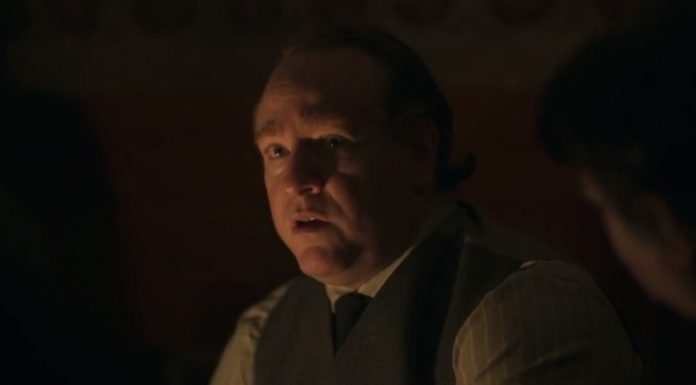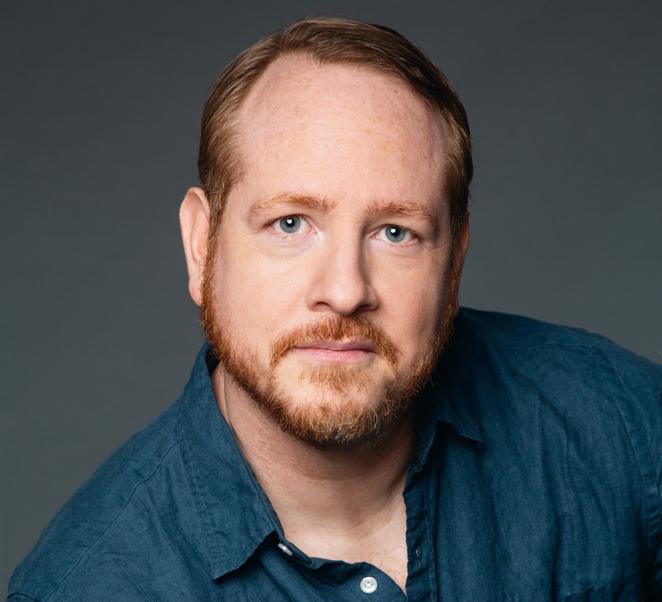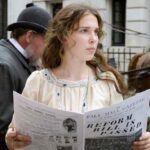“The Gilded Age“ takes us back in time and reveals the intricate details of late 19th-century American culture. With its depiction of riches, ambition, and social turmoil during a time of glaring wealth inequality, this historical drama enthralls viewers. The core of the Gilded Age opens out as tvacute delves deeper into the complex people and plotlines, revealing a world characterized by both excess and hardship.
The Opera War between Bertha (Carrie Coon) and Mrs. Astor escalates. The Duke of Buckingham’s visit excites Bertha. Romantic cousin Dashiell woos Marian. Bertha makes New York’s elite choose between the Music Academy and The Met. Mrs. Astor recruits Agnes to promote the Music Academy. George (Morgan Spector) invites Pittsburgh Union President Mr. Henderson to New York to bribe him into dissolving the union. Henderson leaves refusing. Bertha confronts George about his meeting with Mrs. Winterton (Turner). Bertha believes George’s explanation that Winterton’s seduction failed but is furious he covered it up. Peggy (Denée Benton) covers the opening of a Tuskegee, Alabama, school’s colored dormitory.
We shall examine Mr. Henderson in this analysis of “The Gilded Age,” as he is a character who is deeply entwined with the plot. We’ll go into the character’s riddles and explore any real-life influences that might have influenced the story. Come along on this tour of the opulent ballrooms and the hidden passageways of the Russell mansion, where scandals and mysteries wait to be unveiled.
Is Mr. Henderson based on a Real Labor Union Leader in The Gilded Age?
No, the character of Mr. Henderson in “The Gilded Age” is not modeled after a particular Gilded Age labor union leader from history. Although actual events and personalities serve as inspiration for the play, Mr. Henderson is a fictional character. The Gilded Age offers a rich context for examining the difficulties faced by workers and the relationships between labor and business. It is recognized for its industrial boom and socioeconomic inequities.
Even if Mr. Henderson in “The Gilded Age” is a fictional composite, it’s fascinating to learn about the real-life labor leaders who had a significant impact on the era. Samuel Gompers, the person who started the American Federation of Labor (AFL) in 1886, was one well-known person at this time.
Born in London on January 27, 1850, Samuel Gompers was a key figure in the development of the labor movement in the United States. Gompers, a skilled cigar maker by trade, became well-known for being a compelling leader. He was a key player in the labor scene because of his dedication to promoting the rights of skilled workers and obtaining improved pay and working conditions.
Gompers prioritized direct talks with employers and collective bargaining, keeping an eye on the demands of workers in the short term. He was different from more radical labor leaders of his era in that he preferred cooperation over confrontation.
Under Gompers’ direction, the AFL rose to prominence during the Gilded Age, fighting for the rights of skilled laborers and influencing more extensive labor reforms in the early 20th century. Gompers received praise and criticism for his commitment to the labor movement, which was appropriate given the complexity of the time.
When we make comparisons between the historical Samuel Gompers and the fictional Mr. Henderson, we can see that the troubles shown in “The Gilded Age” are a reflection of the real difficulties faced by workers who were trying to improve their lot in life during the late 1800s industrial boom.
The executive producer Sonja Warfield and writer Julian Fellowes, who created “The Gilded Age,” offer insightful explanations of the role of Mr. Henderson in the show. Warfield argues that the show’s portrayal of labor problems is current, with Mr. Henderson’s persona serving as a bridge between concerns facing the entertainment business today and the Gilded Age.
Warfield highlights the differences between the difficulties encountered by the middle class and the affluent individuals who amass enormous fortune, underscoring the theme’s continued significance. The way labor strikes are shown in “The Gilded Age” speaks to the historical setting and highlights how workers were devalued and not treated humanely during that time.
Julian Fellowes, renowned for his skillful narration in historical dramas, bolsters the notion that the characters’ struggles—among them, the labor issues represented by Mr. Henderson—have their roots in historical fact. The writers hope to provide audiences a complex picture of the socioeconomic climate of the Gilded Age by firmly establishing the story in historical reality.
Who Played Mr. Henderson in The Gilded Age Season 2?
The actor Darren Goldstein gives life to the character of Mr. Henderson in “The Gilded Age” Season 2. Born on Long Island, New York, USA, on August 27, 1974, Goldstein has made a name for himself as a versatile actor by landing prominent parts in critically acclaimed TV shows.
Darren Goldstein gained recognition for his outstanding roles in “The Affair” (2014) and “Ozark” (2017), showcasing his talent for portraying complex and nuanced characters. The popularity of the series in which he has appeared has been attributed to his commanding presence on screen and deft role-playing.
Darren Goldstein has achieved success in the entertainment industry in addition to being married to Katie Finneran since August 16, 2010. His dedication to his work and the genuineness he imbues in his characters make him a memorable figure in “The Gilded Age,” contributing intricacies to the story.
The way “The Gilded Age” blends real-life historical events with fictional people is one of its fascinating features. Upon delving into the complex storylines, viewers may find themselves questioning if Mr. Henderson, the major labor union leader in the series, is based on a real-life historical character.
The Gilded Age Season 2 Episode 3 Recap: Head to Head








